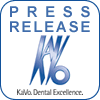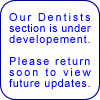Restoration
of ART and Ozone treated primary root carious lesions
By Julian Holmes
Queen's University of Belfast, United Kingdom |
| Objectives:
This study assessed placement time required and durability
of restorations placed on ART and Ozone treated primary
root carious lesions (PRCL) in the most severe category
(J Dent Res 1993;73: 623-629) compared to conventional
treatment. A previous study showed that 100% caries reversal
with ozone treated PRCL’s can be obtained (Gerodontology,
2003: 20, 106-114) in the middle severity lesion group
2. |
Methods: 60 subjects, each with 2 soft PRCL
were selected. After randomisation, each subject had one PRCL
made caries free using conventional local analgesia (LA),
drilling and filling using Optibond Solo Plus and Point 4
(KerrHawe) composite resin. 11 pulp exposures were detected
during cavity preparation and RCT was also performed on these
teeth. The remaining 60 PRCL in the 60 subjects received only
the ART technique and Ozone treatment for 20 seconds (HealOzone,
KaVo) without LA, followed by filling using Optibond Solo
Plus and Point 4.. Up to 1 mm of softened carious dentine
was left overlying the pulpal floor prior to Ozone treatment.
The mean (SD) time required for ART, Ozone treatment and placement
of a restoration was 10 (2) minutes, whilst the conventional
technique, including LA, required 23 (4) minutes (P<0.05).
Results: After 18 months, 56 subjects returned for
recall. 100% of all restorations scored alpha in every recorded
USPHS criteria. All restorations were scored aesthetically
as excellent in appearance in 100% of cases. However, an additional
4 teeth in the conventional treatment group had required RCT
in the intervening 18 months. 25% of the conventionally treated
teeth required RCT whilst none of the ART and Ozone treated
teeth required RCT (P<0.01).
Conclusions: ART and Ozone treatment saves
time and reduces the need for RCT compared to conventional
drilling and filling techniques for treating soft PRCL.
 |
|




